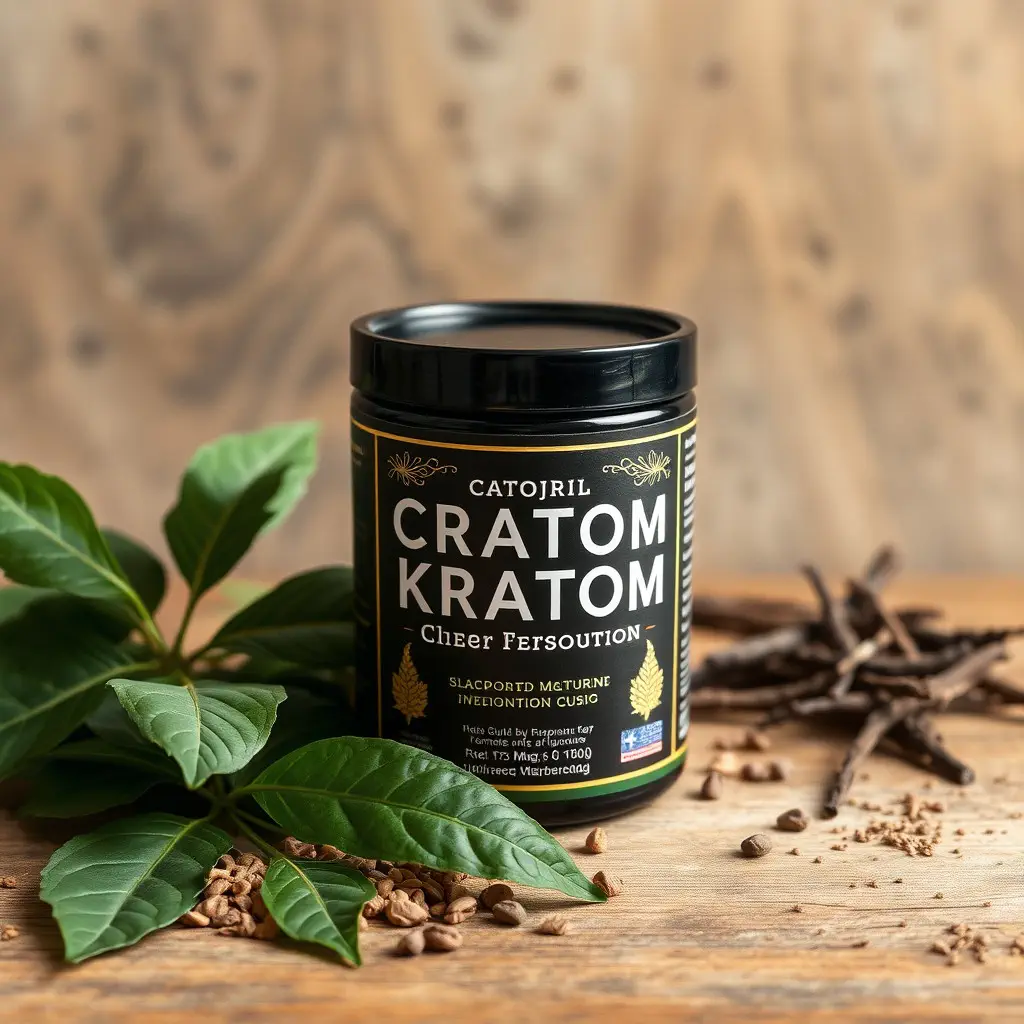Kratom, a plant-based substance from Southeast Asia, has emerged as a potential aid for muscle soreness relief in athletes, offering pain management and accelerated recovery. Its active compounds, mitragynine and 7-hydroxymitragynine, interact with opioid receptors to alleviate discomfort post-intense training or competition. Beyond relieving pain, kratom is reported to enhance stamina and energy levels, which can be beneficial for sustained performance during prolonged workouts. Some athletes also report subjective improvements in mood and concentration, contributing to overall athletic performance. It's important for athletes to be aware of the legal status of kratom, understand its side effects, and consult with healthcare professionals before incorporating it into their training regimen. The potential benefits of kratom for muscle soreness relief must be weighed against the need for responsible use and careful consideration of individual health factors. Athletes should ensure compliance with sporting regulations and prioritize safety by using kratom under professional guidance to avoid adverse interactions and maintain ethical training standards.
Exploring the nuanced relationship between kratom and athletic performance, this article delves into how this botanical can offer muscle soreness relief, potentially enhancing strength and endurance in athletes. We’ll navigate the legal aspects surrounding its use, ensuring safe practices are followed for optimal benefits. Join us as we uncover the role of kratom as a natural ergogenic aid within the realm of sports training and recovery.
- Unlocking Muscle Soreness Relief with Kratom: An Insight into its Role in Athletic Performance Enhancement
- Kratom as a Natural Ergogenic Aid: Understanding Its Impact on Strength and Endurance
- Navigating the Legal Landscape and Safe Usage of Kratom for Muscle Soreness and Athletic Training
Unlocking Muscle Soreness Relief with Kratom: An Insight into its Role in Athletic Performance Enhancement

Athletes frequently experience muscle soreness, a common outcome of intense training and competition. This discomfort can hinder recovery and impact performance. Kratom, a tropical evergreen plant with leaves that contain compounds known as alkaloids, has gained attention in the athletic community for its potential to provide relief from muscle soreness. Specific alkaloids found in kratom, particularly mitragynine and 7-hydroxymitragynine, are believed to interact with opioid receptors in the brain, leading to pain-relieving effects that may help in managing post-exercise discomfort.
The role of kratom in athletic performance enhancement is multifaceted. Not only can it offer muscle soreness relief with kratom, which is crucial for maintaining a rigorous training schedule without significant downtime due to pain, but it also promotes increased stamina and energy levels. This can be particularly beneficial during prolonged activities or when an athlete needs to train multiple times within a short period. Additionally, some users report that kratom contributes to improved mood and mental focus, which are important aspects of athletic performance. However, it is imperative for athletes to exercise caution, adhere to regulatory guidelines, and consult with healthcare professionals before incorporating kratom into their training regimen, due to its potential side effects and the fact that its legal status varies by region.
Kratom as a Natural Ergogenic Aid: Understanding Its Impact on Strength and Endurance

Kratom, a plant originating from Southeast Asia, has garnered attention in various health and wellness circles for its potential ergogenic properties. As an ergogenic aid, kratom is believed to enhance athletic performance by alleviating muscle soreness, thereby allowing for more intense and frequent training sessions without the risk of overuse injuries. The active compounds found in kratom leaves, namely mitragynine and 7-hydroxymitragynine, are thought to interact with opioid receptors in the brain, which can lead to pain relief effects. This analgesic action is particularly beneficial for athletes looking to maintain peak performance levels by reducing recovery time between workouts. Furthermore, certain strains of kratom may stimulate the central nervous system, increasing alertness and energy levels, which can be crucial for endurance activities where sustained mental and physical effort is required. The nuanced effects of different kratom strains—ranging from stimulating to sedative—allow athletes to tailor their use to their specific performance needs, whether it’s enhancing strength or prolonging endurance. It’s important to approach the use of kratom with caution, as its effects can be quite potent and individual responses can vary significantly. Users should adhere to recommended dosages and consult with healthcare professionals before integrating kratom into their training regimen to ensure safety and compatibility with their health status and goals for athletic performance enhancement.
Navigating the Legal Landscape and Safe Usage of Kratom for Muscle Soreness and Athletic Training

When considering the role of kratom in athletic performance enhancement, it’s crucial to first navigate the complex legal landscape surrounding its use. Kratom, derived from the leaves of Mitragyna speciosa, is a botanical that has garnered attention for its potential effects on pain relief and muscle soreness relief with kratom. Its legal status varies across different regions and jurisdictions; thus, athletes must ensure they are fully aware of local regulations before incorporating it into their training regimen. In some areas, kratom is fully legal, while in others, it may be subject to restrictions or even banned substances. It’s imperative for individuals involved in sports to verify the legality of kratom use within their specific competitive environment, including professional leagues, collegiate sports, and amateur competitions, to avoid unintentional rule violations and potential sanctions.
For those operating within legal boundaries, understanding how to use kratom safely for muscle soreness relief is paramount. Kratom contains alkaloids that may influence the body’s opioid receptors, potentially offering pain-relieving effects. These effects can be beneficial for athletes experiencing muscle soreness following intense training or competition. However, it’s important to approach kratom with caution due to its potency and the variability in how individuals metabolize it. Safe usage involves careful dosing, adherence to quality control measures, and ideally, consultation with a healthcare professional knowledgeable about kratom. Athletes should also be mindful of how kratom may interact with other supplements or medications they are taking. Proper education on the correct strains, dosages, and administration methods can help athletes manage muscle soreness while maintaining compliance with ethical training standards and ensuring their health and safety remain a top priority.
In conclusion, kratom has emerged as a multifaceted tool for athletes seeking muscle soreness relief and enhanced performance. Its natural ergogenic properties offer a viable alternative to synthetic options, potentially improving strength and endurance without the adverse side effects often associated with conventional supplements. However, it is imperative to approach its use with caution within the regulated framework that governs its legal status. Athletes considering kratom for muscle soreness relief must prioritize safety, adhering to recommended dosages and consulting healthcare professionals. By navigating this complex landscape informed by scientific research and regulatory guidelines, athletes can harness the benefits of kratom responsibly, contributing to their overall athletic performance enhancement.






